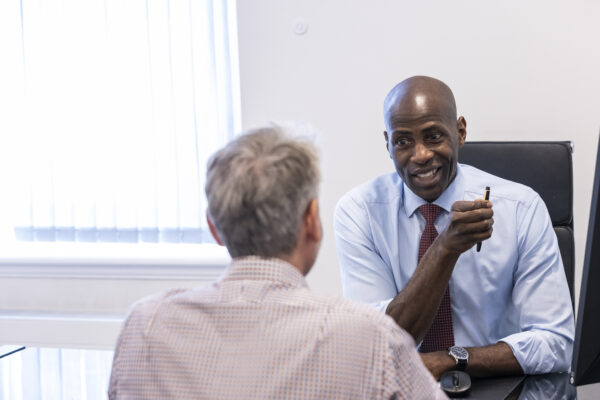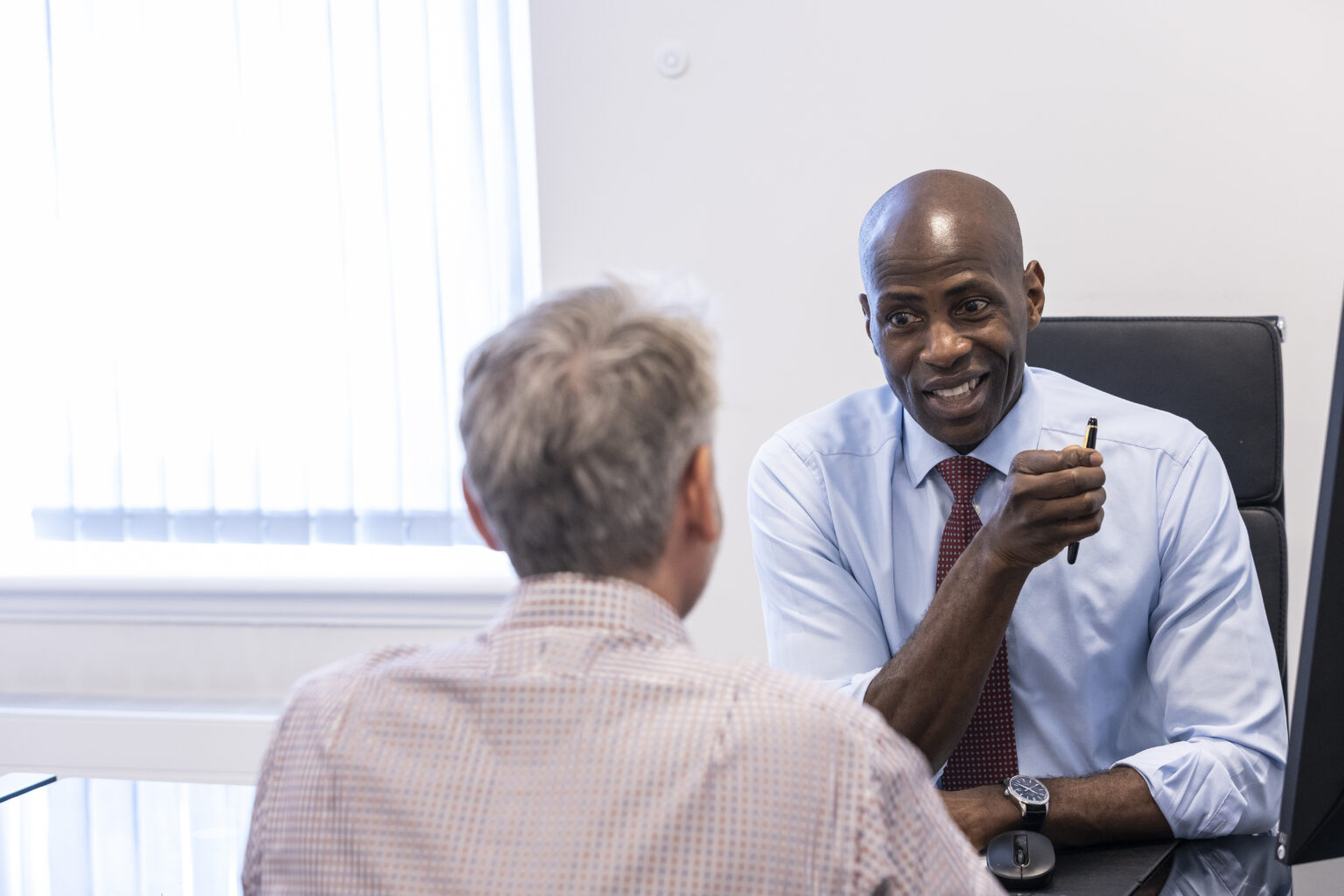Contact number: 020 7806 4060
What are Bladder Investigations?
Bladder investigations help to diagnose a wide range of bladder-related conditions. These tests may include:
- Cystoscopy: A procedure to examine the bladder using a thin, flexible camera.
- Urodynamic Testing: Evaluates how well the bladder stores and empties urine.
- Bladder Ultrasound: Uses imaging to assess bladder structure and function.
- Urine Tests: Detect infections, blood, or abnormalities in the urine.
These investigations are recommended for patients experiencing symptoms such as frequent urination, difficulty urinating, blood in the urine, or chronic bladder pain.
Bladder Investigations at St John & St Elizabeth Hospital
At St John & St Elizabeth Hospital, we provide personalised bladder investigations in a comfortable and supportive environment. Our experienced urologists ensure that every test is tailored to your symptoms and medical history.
Why choose us for bladder investigations?
- Specialist Urologists: Our consultants are highly experienced in diagnosing and treating bladder conditions.
- Comprehensive Testing: We offer a wide range of diagnostic options to ensure accurate results.
- Modern Facilities: Our hospital is equipped with advanced tools to provide precise diagnoses and effective treatment plans.
- Accessible Location: Conveniently based in NW8, we serve patients from Hampstead (NW3), Kilburn (NW6), and across London.
We are dedicated to identifying the cause of your symptoms and guiding you towards the most appropriate treatment.
Consultants who perform Bladder Investigations in London
How Much Do Private Bladder Investigations Cost?
£1,925
The price shown includes all costs associated with your treatment, from admission to discharge.
Doesn’t include surgeon or anaesthetist fee.
Our hospital fee is guaranteed at the price quoted and valid for one month from the date issued, subject to pre-assessment.
How to pay for your treatment
If you’re… paying for yourself
Did you know you don’t need private medical insurance to come to St John & St Elizabeth Hospital? As a self-pay patient, you can access safe, outstanding quality health care at times to suit you.
For scans and tests, as well as to see most consultants, you’ll still need to be referred by a medical professional like your GP, but as a self-pay patient, the process is more straightforward. You won’t need authorisation from an insurance provider, and you’ll have greater choice of consultant and appointment times.
If you’re… insured
St John & St Elizabeth Hospital is approved by all major medical insurance companies. If you have a personal private health insurance policy, or your company provide it for you, you can use it to pay for your care from your initial consultation through to treatment, surgery and aftercare such as physiotherapy. Not all private health insurance plans cover the same things. It’s very important to check exactly what you are covered for with your insurance provider.
Frequently Asked Questions About Bladder Investigations
How to Find Us for Private Bladder Investigations in London
St John & St Elizabeth Hospital is located in St John’s Wood (NW8), a well-connected area of North West London. We are conveniently accessible for patients from Hampstead (NW3), Kilburn (NW6), and beyond.
By Tube:
- St John’s Wood station (Jubilee Line) is just a 5-minute walk from the hospital.
- Finchley Road (NW3) and Kilburn stations (NW6) on the Jubilee Line provide excellent connections.
By Bus:
- Wellington Road: Routes 13, 46, 82, and 113 stop near St John’s Wood Underground Station, just a short walk from the hospital.
- Circus Road: Routes 46 and 187 stop close to the hospital’s Circus Road entrance.
- Abbey Road: Routes 139 and 189 stop near the junction where Grove End Road becomes Abbey Road, providing easy access.
Major Roads:
If you’re travelling from NW3 or NW6, major routes such as Finchley Road or Kilburn High Road offer a direct approach to the hospital.
Urodynamic testing involves inserting small catheters into the bladder and rectum, which may cause mild discomfort but is generally well-tolerated.
Bladder investigations are recommended if you experience symptoms such as frequent urination, pain during urination, blood in your urine, or recurrent urinary tract infections.
A bladder ultrasound is a painless, non-invasive scan that uses sound waves to create images of your bladder. It may require a full bladder for accurate results.
After a cystoscopy however, it make take a few days to get back to normal. If you had sedation or general, you will feel drowsy for 24 hours after.
After effects from the cystoscopy may include:
- Bleeding, which can look bright pink in your urine or on toilet tissue
- A burning sensation when peeing
- More frequent urination for a couple of days
However, within a few days, you should be back to normal.
A cystoscopy can be performed in different ways. It could be done using a local anaesthetic gel to numb your urethra or it could be done as a day-patient procedure with sedation. Alternatively, it could be done under general anaesthesia where you are asleep. The type of cystoscopy you have will depend on the reason for your procedure.
Ahead of your cystoscopy, you doctor may ask you to take antibiotics, especially if you have trouble fighting off infections.
If you will be having sedation or general anaesthetic, you should stop eating six hours beforehand. Two hours before, you should stop drinking (including water), chewing gum and sucking boiled sweets. If you are just having local anaesthetic, you can carry on as normal.
You should also wait to empty your bladder as your doctor may ask you to provide a urine sample just before your cystoscopy starts.
The doctor will start the procedure by passing the cystoscope (a thin tube) through the urethra and into the bladder. The cystoscope will have a camera and light at the end, which will transmit real-time images of your bladder to a monitor.
Your doctor will look around the bladder for any abnormalities, such as tumours, stones or signs of infection. In some cases, your doctor will be able to treat you then and there. For example, they could remove very small tumours using special instruments.
A cystoscopy is a quick procedure. When done with local anaesthetic it usually only takes between 5 – 15 minutes. If done under sedation or general anaesthetic, the procedure will take a little longer, between 15 – 30 minutes.
If you had local anaesthetic, after the procedure, you should be able to carry on with your day. If you had sedation or general, we will take you to a private room to recover and wait for the medication to wear off. Someone will need to collect you and take you home, as you will not be able to drive.


